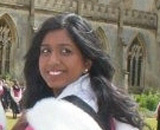 Shadowing began over a week ago. As around 7000 of my newly qualified peers entered our new homes (read: hospital trusts) for the first time, I couldn’t help but feel a sense of adventure. In some ways it felt like the first day of school—new rules, new faces, new friends. In others it was also like the first day of medical school—new responsibilities and new jargon. Everything familiar and yet somehow uniquely different. Who knew that within a few short hours, our minds would be spinning with more acronyms than we’d know what to do with: from DOPS to CBDs to PDPs. And that’s just our online portfolios!
Shadowing began over a week ago. As around 7000 of my newly qualified peers entered our new homes (read: hospital trusts) for the first time, I couldn’t help but feel a sense of adventure. In some ways it felt like the first day of school—new rules, new faces, new friends. In others it was also like the first day of medical school—new responsibilities and new jargon. Everything familiar and yet somehow uniquely different. Who knew that within a few short hours, our minds would be spinning with more acronyms than we’d know what to do with: from DOPS to CBDs to PDPs. And that’s just our online portfolios!
I arrived concerned about the clinical work. What I’ve come to realise is that the clinical work is what we know best: we’ve been training to do it for 6 years, and finals comprehensively tested both our theoretical knowledge and practical skills. The tough part is going to be fitting in all the concurrent compulsory assessments and evaluations, plus working out how to navigate the hundreds of computer systems. Being of a generation that grew up with technology at our fingertips, one would think this would be simple. Alas, the operating system appears to have different ideas. If only resetting my radiology PACS card was covered in finals. I should concede that the skills of ordering blood tests, requesting radiology, and writing up drug charts were all seen in practice during our final year on the wards. However there is a very significant difference between seeing someone write a drug chart and actually signing your name to one. The thumping of my heart beat and frantic triple-checking of the BNF was truly unparalleled.
But never mind, we settle into our new wards with gusto and determination to learn as much as we can, seizing the opportunity to quiz the current FY1s on all their secrets and tips to make our transition that much smoother. In my trust, two fantastic current FY1s created a “survival guide” crammed with insider advice on each ward and information to calm the minds and steady the nerves of fledgling doctors such as ourselves. They even went into the minutiae of arranging leave. Who knew that it was so complicated a procedure? Anyone would think the hospital was attempting to dissuade staff from taking time off. I myself am rather worried that I will get to the end of my FY1 year without having taken a single day of annual leave for fear of the paperwork involved.
However, I shouldn’t complain. I seem to have found myself amongst a fantastic group of fellow FY1s and an extremely supportive ward and hospital. And with comprehensive protected shadowing time (thank you, Medical Education Department and GMC), I am grateful that we’ve had the good fortune to spend some time under supervision to test the waters, observing, and attempting. See one, do one.
I can be honest in saying that there will always be nerves on the first day of any job, and especially one such as medicine. Furthermore, regardless of the days, weeks, or months of shadowing, we are never going to know everything about a job until we are asked to stand on our own two feet and just get on with it. Tomorrow I hope we will all enter our respective wards with the mind-set that a few nerves are normal, shadowing has given us the basics, and the rest will require us to be armed with a little courage to ask for help if we feel out of our depth.
And so it begins…
Anna Allan recently qualified as a doctor. She graduated from Gonville and Caius College, University of Cambridge in June 2012. She begins her Foundation Year rotation in the North Central Thames deanery.